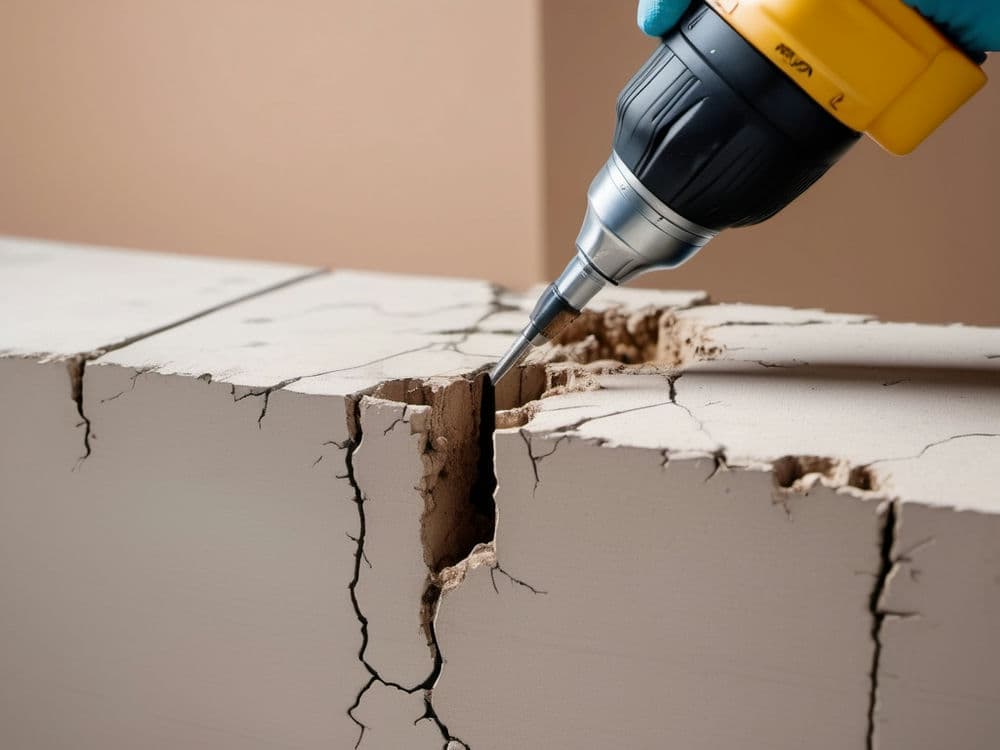

Standard square shaft helical piles are usually constructed using small equipment such as a skid-steer loader, or an excavator, equipped with hydraulic drive heads.
This method not only allows for faster installation but also lessens the requirement of extensive preparation for the soil. They provide a durable foundation that lasts for a long time Exploring the Efficiency of Helical Piles in Construction geotechnical engineering. They provide a durable foundation that lasts for a long time helical pile installers near me revolution. The operator plays a crucial role in ensuring the piles are installed plumb by using visual cues and assistance from ground personnel.
They provide a durable foundation that lasts for a long time helical piles installers machine
One of the main factors in helical pile construction is achieving the capacity of load you want to achieve. This is when the relationship between the installation torque and load capacity becomes vital. The most modern torque gauges, such as the Chance Digital Torque Indicator, are crucial to this process, providing accurate measurements, and removing the uncertainty in estimates of pressure in hydraulic systems.
The operating speed during installation is crucial, usually being between 8 and 16 RPMs. This controlled speed will ensure that the pile moves approximately three inches each revolution consistent with the pitch of the helical plates. If the pile doesn't advance in the manner expected, adjustments such as increasing downward thrust or adding larger plates for helicals are made to avoid 'spinning out' like the threads of a screw being stripped.
Screw piles, sometimes referred to as screw-piles, screw piers, screw anchors, screw foundations, ground screws, helical piles, helical piers, or helical anchors are a steel screw-in piling and ground anchoring system used for building deep foundations. Screw piles are typically manufactured from high-strength steel[1] using varying sizes of tubular hollow sections for the pile or anchors shaft.
The pile shaft transfers a structure's load into the pile. Helical steel plates are welded to the pile shaft in accordance with the intended ground conditions. Helices can be press-formed to a specified pitch or simply consist of flat plates welded at a specified pitch to the pile's shaft. The number of helices, their diameters and position on the pile shaft as well as steel plate thickness are all determined by a combination of:
Safety put 'in jeopardy' by some companies shoring up shaky homes, industry complaint alleges CBC.ca
Posted by on 2019-06-23
This innovative solar foundation company just got $40M in funding Electrek
Posted by on 2022-09-20
Every Deck Starts with Good Footings Fine Homebuilding
Posted by on 2016-06-17
What is a Helical Pier? The Good Men Project
Posted by on 2020-12-03
What Are Helical Piles Used For - Make It Right® Mike Holmes
Posted by on 2023-08-03
Remote-controlled Demolition Equipment Solves Challenging Helical Pier Project For Construction Pros
Posted by on 2022-04-05
Getting the Basics Right: Ground Screws vs. Driven Piles Solar Builder Magazine
Posted by on 2022-01-20
Helical piles also have a high level of sustainability, which is a major concern in modern construction practices. Because they cause little disturbance to the land and don't need concrete to construct, their environmental impact is significantly lower than that of traditional foundations. Additionally, they are often constructed of recycled steel and their removable nature allows them to be reused, further enhancing their eco-friendly appeal.
Another benefit of Helical piles is their ability for load-bearing immediately after their installation. The instant transfer of load allows construction to proceed without delay, a stark contrast to the time-consuming waiting times that are associated with concrete foundations. This also offers a distinct advantage in emergency situations or in the case of unstable structures that need immediate stability.

The construction industry is always changing as new technology and methods continually emerging to address the needs in the 21st century. Among these innovations Helical piles have attracted considerable attention as they offer an extremely durable and flexible foundation that can meet the many requirements of modern construction projects. This article explores the myriad of ways that Helical piles are helping to create a solid base for construction's future.
In addition to their primary benefits, helical piles are also equipped with additional advantages that strengthen their place in modern construction. They include:
These additional attributes, along with their primary benefits, are what make Helical piles extremely flexible and effective foundation choice for a variety of construction projects.

Versatility is a key attribute of helical piles. They can be adapted to a wide range of soil kinds and conditions, making them a viable option for a wide range of projects, ranging from residential buildings to industrial structures. The design of their construction can be customized to suit specific load requirements which makes them more suitable for various construction scenarios.
Helical piles also have the benefit of instant load-bearing capacity. Once installed, they can support loads right away and offer a distinct advantage over traditional methods which have to wait for concrete to cure. This is especially beneficial when projects have strict deadlines or situations where time is of the essence.
Lastly, the sustainability of helical piles should not be neglected. They are usually made from recycled steel and are completely accessible, which allows for reuse in subsequent projects. This reusability, combined with the reduced carbon footprint during installation, aligns well with the increasing focus on green construction practices.
In conclusion the hidden advantages of the installation of helical piles such as speed, low environmental impact, flexibility, immediate load capacity, and environmental sustainability - are the reason for their rising popularity in the construction field. As we continue to seek the most efficient, cost-effective, and sustainable building techniques Helical piles are a strong, innovative solution to the current challenges of construction.
Based on the strength and foundation of the helical piles and their use in construction projects brings several advantages. These are in the following manner:
These factors highlight the many benefits of making use of helical piles and highlight their importance in improving sustainability, efficiency and cost-effectiveness of construction.
